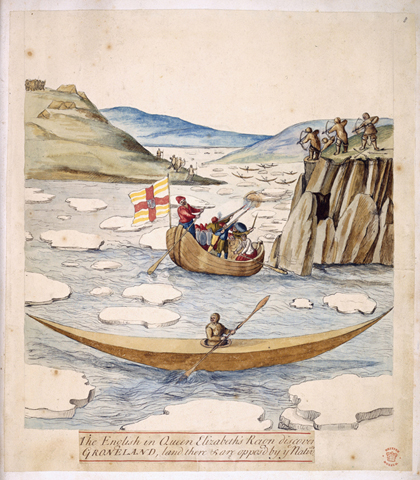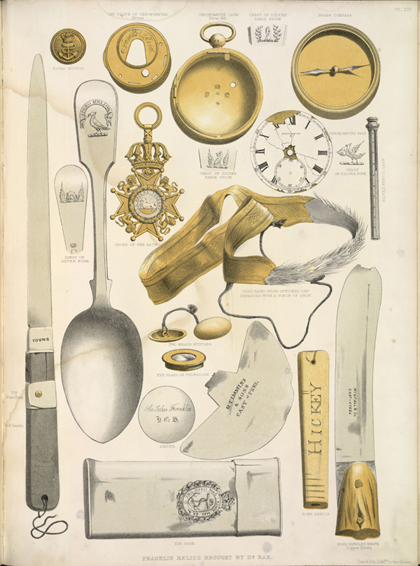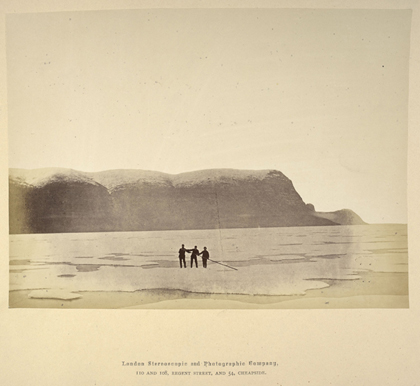Lines in the Ice: Seeking the Northwest Passage
by Philip Hatfield and Tom Harper


Click on any image to enlarge
and view as slideshow
Their stories are told via first-hand accounts of life and conditions in the Arctic, ancient and modern maps showing our changing perceptions of the Northwest Passage, rare oral recordings of Inuit describing the arrival of European explorers, and video footage of a failed attempt to fly across the Arctic.
During the course of the exhibition, the Library’s writer-in-residence Rob Sherman is writing an interactive story and game, funded by CreativeWorks London. See his work unfold on his blog diary.
A series of events about the Arctic is headlined by Ryan Harris, a marine archaeologist who was part of the successful search for HMS Erebus, and includes a talk by Rob Sherman and a debate on science in extreme climates. More info.
Lines in the Ice: Seeking the Northwest Passage runs from 14 November 2014 to 29 March 2015. The exhibition is sponsored by The Eccles Centre for American Studies and One Ocean Expeditions.
Opening hours
Monday to Thursday 9:30 am to 8 pm
Friday 9:30 am to 6 pm
Saturday 9:30 am to 5 pm
Sunday and Bank Holidays 11 am to 5 pm
Free entry
Philip Hatfield is Curator for Canadian and Caribbean Studies at the British Library and the lead curator of Lines in the Ice. Tom Harper is a curator in the British Library’s Department of Cartographic and Topographical Materials, co-curator of the exhibition, and co-author of Magnificent Maps (2010) and A History of the 20th Century in 100 Maps (2014). More info.
All images courtesy of The British Library

